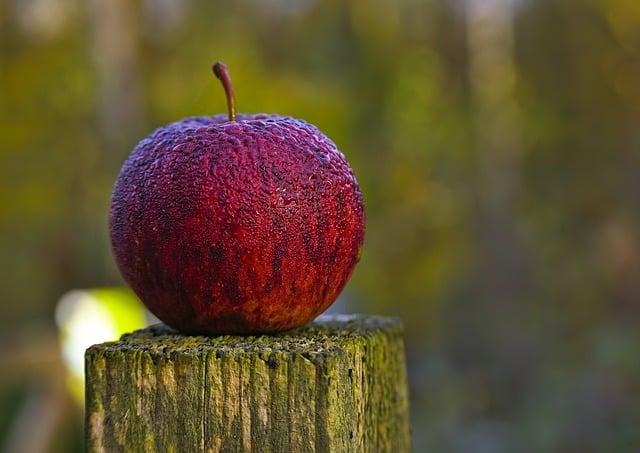Once upon a time, in a cozy little home, a dog named Max eagerly awaited his owner’s return. Each day, he was greeted with a delightful surprise: fresh fruit! From juicy apples to sweet blueberries, Max savored every bite. His coat gleamed, energy soared, and his playful spirit shone brighter than ever. But can you feed your dog fruit every day? Absolutely! In moderation, fruits can provide essential vitamins and antioxidants, enhancing your dog’s health. So, why not share the joy of fruit with your furry friend? They’ll thank you with wagging tails and happy barks!
Contents
- Understanding the Nutritional Benefits of Fruits for Dogs
- Identifying Safe Fruits and Their Appropriate Portions
- Potential Risks and Considerations When Feeding Fruits Daily
- Expert Recommendations for Incorporating Fruits into Your Dogs Diet
- Q&A
Understanding the Nutritional Benefits of Fruits for Dogs
Fruits are not just delicious treats for humans; they can also be a nutritious addition to your dog’s diet. Packed with essential vitamins, minerals, and antioxidants, fruits can contribute significantly to your dog’s overall health. For instance, fruits like blueberries and strawberries are rich in antioxidants, which help combat oxidative stress and support a healthy immune system. Incorporating these colorful gems into your dog’s meals can enhance their vitality and longevity.
Moreover, many fruits are high in fiber, which aids in digestion and promotes a healthy gut. Apples, for example, are an excellent source of dietary fiber and can help regulate your dog’s digestive system. The fiber content in fruits can also assist in maintaining a healthy weight, as it promotes a feeling of fullness without adding excessive calories. This makes fruits a smart choice for dogs who may be prone to obesity.
Additionally, fruits provide hydration, especially in warmer months. Watermelon and cucumbers are not only refreshing but also have high water content, helping to keep your dog hydrated. This is particularly beneficial for active dogs or those who spend a lot of time outdoors. By offering fruits as a part of their daily diet, you can ensure your furry friend stays hydrated and energized throughout the day.
It’s important to remember that while fruits can be beneficial, moderation is key. Some fruits, like grapes and raisins, are toxic to dogs and should be avoided entirely. Always introduce new fruits gradually and observe your dog’s reaction. By choosing safe and healthy options, you can enrich your dog’s diet with the nutritional benefits that fruits offer, making mealtime both enjoyable and healthful.
Identifying Safe Fruits and Their Appropriate Portions
When considering fruits for your furry friend, it’s crucial to choose options that are not only safe but also beneficial for their health. Some fruits can be a delightful treat for dogs, providing essential vitamins and minerals. However, not all fruits are created equal. Here are some safe choices that you can incorporate into your dog’s diet:
- Apples: Rich in vitamins A and C, apples are a crunchy snack that many dogs enjoy. Just be sure to remove the seeds and core.
- Blueberries: Packed with antioxidants, blueberries can help support your dog’s immune system. They make for a perfect training treat!
- Bananas: High in potassium and fiber, bananas can be a sweet addition to your dog’s diet. However, moderation is key due to their sugar content.
- Watermelon: This hydrating fruit is great for hot days. Just remember to remove the seeds and rind before serving.
Portion control is essential when introducing fruits into your dog’s daily routine. While fruits can be a healthy addition, they should only make up a small portion of your dog’s overall diet. A good rule of thumb is to limit fruit treats to about 10% of their daily caloric intake. This ensures that your dog receives a balanced diet without excessive sugar or calories that could lead to weight gain.
When feeding your dog fruit, start with small portions to gauge their reaction. Some dogs may have sensitivities to certain fruits, so it’s wise to introduce new options gradually. For instance, begin with a few small pieces of apple or a couple of blueberries and observe how your dog responds. If they enjoy the fruit without any adverse reactions, you can gradually increase the portion size while still keeping it within the recommended limits.
Lastly, always wash fruits thoroughly to remove any pesticides or chemicals before offering them to your dog. Additionally, consult with your veterinarian if you’re unsure about specific fruits or portion sizes, especially if your dog has pre-existing health conditions. By being mindful of the fruits you choose and their portions, you can safely treat your dog to a delicious and nutritious snack that enhances their overall well-being.
Potential Risks and Considerations When Feeding Fruits Daily
While incorporating fruits into your dog’s diet can offer numerous health benefits, it’s essential to be aware of potential risks that may arise from daily consumption. Not all fruits are safe for dogs, and some can even be toxic. For instance, grapes and raisins are known to cause kidney failure in dogs, while citrus fruits can lead to gastrointestinal upset. Always ensure that the fruits you choose are safe and suitable for your furry friend.
Another consideration is the sugar content found in many fruits. Dogs, like humans, can be susceptible to the effects of excessive sugar intake, which may lead to obesity and related health issues such as diabetes. It’s crucial to monitor the quantity of fruit you offer and balance it with their overall diet. Moderation is key; a small piece of fruit as an occasional treat is generally acceptable, but daily servings should be carefully measured.
Some dogs may also experience digestive issues when introduced to fruits, especially if they are not accustomed to them. Symptoms such as diarrhea, vomiting, or bloating can occur if fruits are given in large amounts or too frequently. To mitigate this risk, introduce new fruits gradually and observe your dog’s reaction. If any adverse symptoms arise, it may be best to consult with your veterinarian before continuing.
Lastly, consider the preparation of fruits before offering them to your dog. Many fruits have seeds or pits that can pose choking hazards or lead to intestinal blockages. Always remove any seeds or pits and cut the fruit into manageable pieces. Additionally, washing fruits thoroughly can help eliminate pesticides and chemicals that may be harmful to your pet. By taking these precautions, you can ensure that your dog’s fruit consumption remains a safe and enjoyable experience.
Expert Recommendations for Incorporating Fruits into Your Dogs Diet
Incorporating fruits into your dog’s diet can be a delightful and nutritious way to enhance their meals. However, it’s essential to choose the right fruits and introduce them gradually. Start with small portions to monitor your dog’s reaction. **Blueberries**, for instance, are packed with antioxidants and can be a great treat. Just a few berries can provide a burst of flavor and health benefits without overwhelming your pet’s digestive system.
When selecting fruits, opt for those that are safe and beneficial for dogs. **Apples** (without seeds) are an excellent source of vitamins A and C, while **bananas** offer potassium and fiber. Remember to cut these fruits into manageable pieces to prevent choking hazards. Additionally, consider seasonal fruits like **watermelon** or **peaches**, which can be refreshing and hydrating during hot months. Always ensure that any fruit you offer is fresh and free from pesticides.
It’s crucial to avoid certain fruits that can be harmful to dogs. **Grapes** and **raisins** are notorious for causing kidney failure in dogs, so they should be strictly off-limits. Similarly, **citrus fruits** like oranges and lemons can upset your dog’s stomach. Always do your research and consult with your veterinarian before introducing new fruits into your dog’s diet to ensure they are safe and suitable for your furry friend.
Lastly, consider using fruits as a reward during training sessions or as a healthy snack between meals. This not only adds variety to their diet but also reinforces positive behavior. By incorporating fruits thoughtfully and in moderation, you can provide your dog with a tasty treat that contributes to their overall health and well-being. Remember, balance is key, and fruits should complement a well-rounded diet rather than replace essential nutrients found in high-quality dog food.
Q&A
-
Can I feed my dog fruit every day?
Yes, you can feed your dog fruit every day, but moderation is key. Fruits can provide essential vitamins and antioxidants that contribute to your dog’s overall health. However, it’s important to choose fruits that are safe for dogs and to limit the quantity to avoid digestive issues.
-
Which fruits are safe for dogs?
Some safe fruits for dogs include:
- Apples (remove seeds and core)
- Blueberries
- Bananas
- Watermelon (remove seeds and rind)
- Strawberries
Always introduce new fruits gradually and observe your dog for any adverse reactions.
-
Are there any fruits I should avoid?
Yes, certain fruits can be harmful to dogs. Avoid feeding your dog:
- Grapes and raisins (can cause kidney failure)
- Citrus fruits (can upset their stomach)
- Avocado (contains persin, which can be toxic)
- Cherries (the pits can be harmful)
Always research and ensure the fruit is safe before offering it to your dog.
-
How much fruit can I give my dog?
The amount of fruit you can give your dog depends on their size and dietary needs. A general guideline is:
- Small dogs: 1-2 small pieces of fruit
- Medium dogs: 2-3 small pieces or a few slices
- Large dogs: 3-4 pieces or a handful
Always consult with your veterinarian to determine the appropriate portion for your dog’s specific health needs.
Incorporating fruit into your dog’s diet can offer numerous health benefits, but moderation is key. By choosing safe options and consulting your vet, you can enhance your furry friend’s nutrition while keeping them happy and healthy. Make informed choices today!

大家好,我是彼得潘,專業的手法身體治療師。我喜歡探索和研究各種主題,並透過與人工智慧的合作分享專業、實用、有趣的文章。我們定期進行人工審核,以確保內容的準確性。如果您發現文章中有任何不準確的地方,請隨時與我們聯繫,我們會及時糾正。您可以透過 [email protected] 與我們聯繫。



